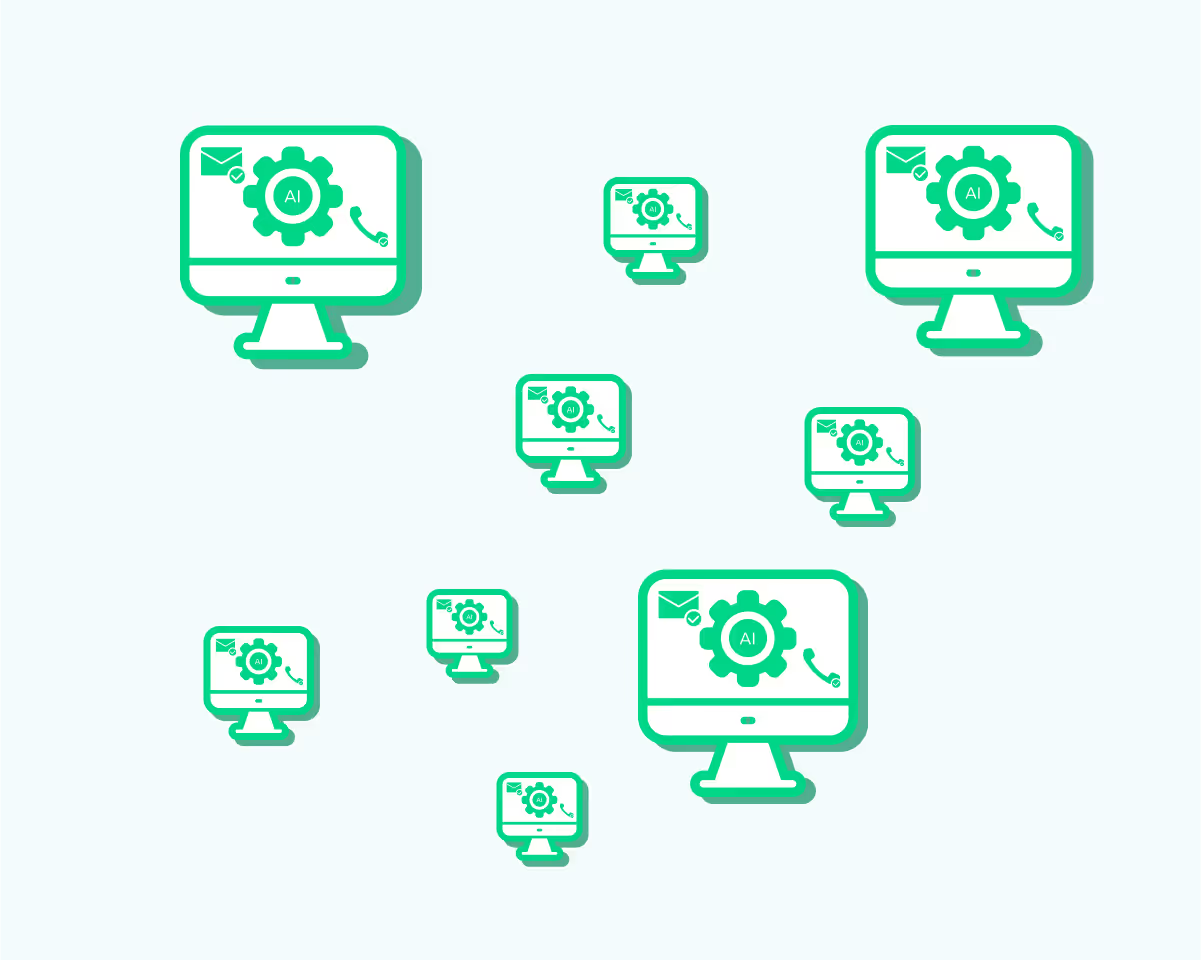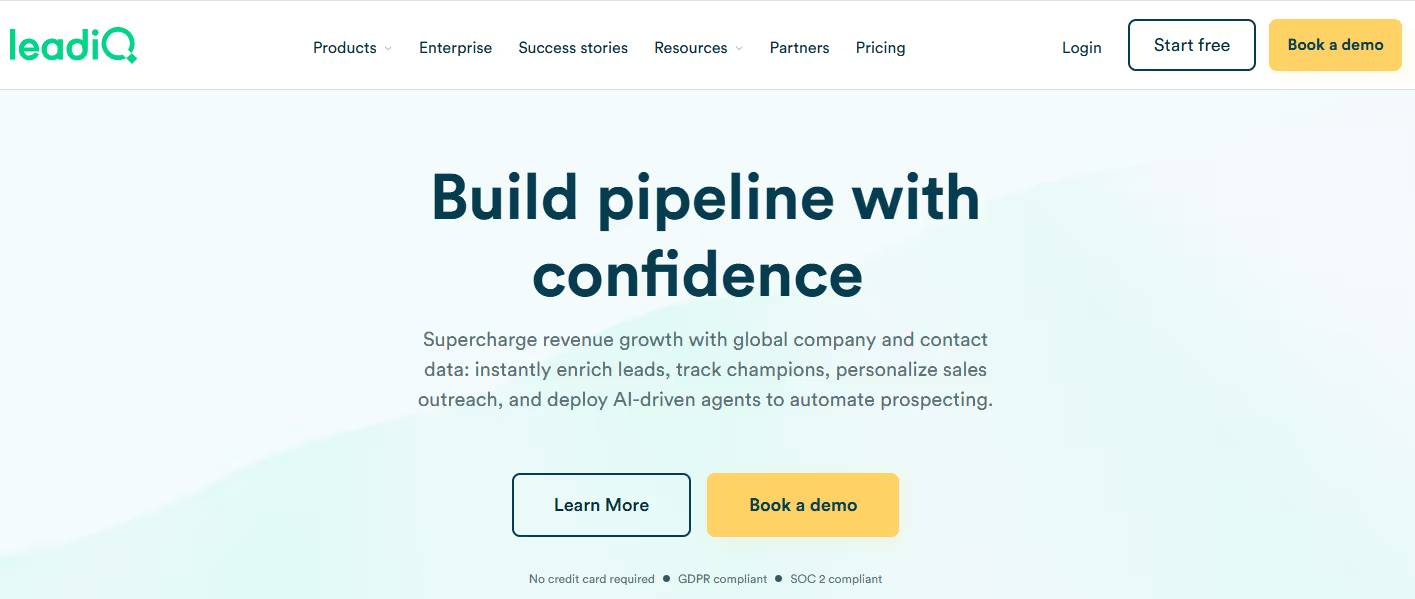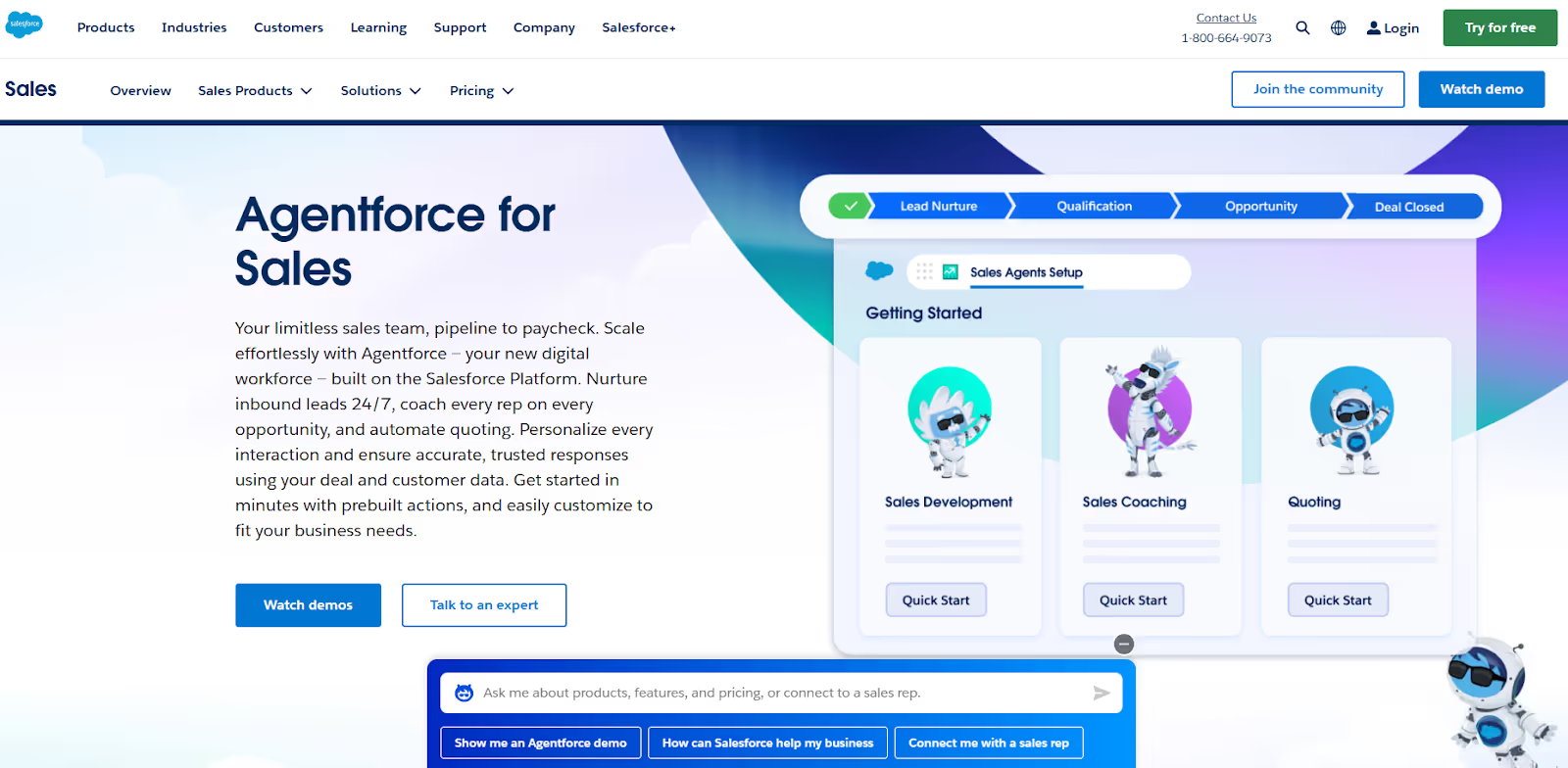Ready to create more pipeline?
Get a demo and discover why thousands of SDR and Sales teams trust LeadIQ to help them build pipeline confidently.



AI SDRs can automate many repetitive sales tasks, enabling human reps to reclaim time and use it to build better relationships and focus more on selling.

Serving as a sales autopilot of sorts, AI SDRs can help qualify leads, warmup inboxes, manage inbound leads, and automate repetitive sales tasks.

We believe AI SDRs should be used to help humans, not replace them in the sales process.
Get a demo and discover why thousands of SDR and Sales teams trust LeadIQ to help them build pipeline confidently.
Imagine being able to generate thousands upon thousands of new leads in short order — all without having to hire a single person.
By augmenting your sales team with an AI sales development representative (SDR), you can supercharge prospecting without adding any headcount.
An AI SDR is an AI-powered technology that automates repetitive sales activities, like lead qualification and cold email outreach, enabling human reps to reclaim time to focus on more strategic initiatives.
Using natural language processing, machine learning, and automation, AI SDRs are capable of handling sales tasks traditionally performed by good old-fashioned humans.
The AI SDR market is expected to grow rapidly over the coming years, hauling in $67.36 billion by 2030, up from $18.58 billion in 2023. Now let’s get into the differences between AI SDRs and AI sales agents.
While AI SDRs and AI sales agents are similar, they’re not the same thing.
Typically, AI SDRs are designed to mimic normal sales development reps tasks, automating things like identifying leads, cold outreach, lead qualification, and scheduling discovery calls.
These tools can either be fully automated or they can augment a human rep’s output with a hybrid model where humans and technology work side by side. When used as an assistant, AI SDRs are laser-focused on filling the pipeline so that human reps can step in and do what they do best.
AI sales agents, on the other hand, are entirely autonomous and can perform a variety of tasks across the entire sales process, including AI SDR tasks, but also automating follow-ups, answering questions for reps, handling objections, identifying cross-selling and upselling opportunities, and even post-sale follow-up.
Virtually every sales team deals with the same headaches:
By implementing an AI SDR, sales orgs can overcome these challenges — and more. By 2028, Gartner expects AI sales tools will handle 60% of all sales work — a significant uptick from the less than 5% the technology managed in 2023.
Thinking about adding an AI SDR tool to your tech stack? Shrewd move! Here are five AI SDRs to consider testing out based on online user reviews.

G2 score: 4.2 out of 5 stars
LeadIQ’s powerful data enrichment and sales prospecting tools deliver several AI-powered features that can help sales teams work more effectively.
With automated alerts, champion and contact tracking, and a built-in generative AI email writing tool, Scribe, that enables reps to personalize outreach at scale in just a few clicks. And the best part? We’re constantly adding new AI features to our solutions, enabling our customers to future-proof their AI strategies and grow alongside us.
Pricing: Free Chrome extension available. Request demo for full pricing with all available features.

G2 score: 4.4 out of 5 stars (83 reviews)
Salesforce AI Sales Agents — also known as Agentforce — are customizable AI agents that can handle all kinds of SDR activities, including lead nurturing, personalized outreach, and fast follow-ups. While the tool can help teams get more done, some users on G2 say that the solution is buggy, that it’s hard to integrate external data, and that it can be expensive if used at scale due to consumption-based pricing.
Pricing: Starts at $2/conversation

G2 score: 4.7 out of 5 stars (49 reviews)
AiSDR is a startup that builds tools designed to help teams automate their sales playbooks by reviewing inbound leads, identifying high-intent prospects, and initiating conversations over LinkedIn, email, and text.
While AiSDR has good reviews on G2 it’s also a newer product with some users reporting issues with uncustomizable sequences, a lack of integration, and confusing analytics.
Pricing: Starts at $900/month

G2 score: 4.9 out of 5 stars (17 reviews)
Katie is a new AI SDR designed by Alta, a new startup who received recent funding by Entrée Capital and Target Global. Teams can deploy Katie and gain access to an AI SDR that identifies prospects and follows up automatically, with personalized interactions, 24/7.
Users do, however, report that Katie has a bit of a learning curve and that the up-and-coming platform is missing features they expect would be there.
Pricing: Available upon request.
Whenever there’s a conversation about artificial intelligence being deployed at an organization, some folks worry that the technology is going to take their jobs. While these concerns are totally understandable, sales reps shouldn’t be too concerned about a future where robots do all the selling.
Sales is personal, and people want to do business with people they like — not robots. Unlike AI, humans are also able to adapt to a lead’s personality or their unique circumstances, getting creative in the moment.
While AI SDRs should never entirely replace their human counterparts, they can certainly augment their productivity.
On top of this, AI SDRs can also qualify leads rapidly, enriching contact data and making sure they’re routed to the right agents every time.
When humans and AI work hand-in-hand, the technology can handle the repetitive work, freeing the human rep to focus on building relationships, sales strategy, sales process optimization, and, of course, closing more deals.
While AI SDRs can have a positive impact on overall sales outcomes, they’re not without their flaws. In this section we examine five pros and five cons of using artificial intelligence to augment the output of your SDRs.
As you begin searching for an AI SDR to potentially deploy alongside your team, it’s important to remember that not every tool is created equally.
Features and functionality can vary widely, so it’s important to do your due diligence and dig into how each solution manages outreach and personalization, along with how they integrate with your existing sales tech stack. You’ll also want to look for solutions that fit within your budget and are easy to use so your team can put the tools to work right away.
As you look into AI SDRs, you’ll find that they tend to perform different tasks within the sales process. Some might be great at identifying qualified prospects while others are focused on sending cold outreach or ensuring the CRM is updated with all the right fields.
Identify what goals you’re looking to solve that are taking up your team’s time and see what AI SDR has the right features.
Pro tip: Make sure whatever solution you choose offers human oversight controls so that reps have the final say in how the AI ultimately behaves.
The right AI SDR solution will integrate seamlessly with the other solutions in your tech stack, including your CRM, marketing automation platform, and sales engagement platforms like Gong and Salesloft.
This ensures all important data flows back and forth between systems, letting sales teams maintain a single source of truth.
In today’s tricky economic climate, it’s important to ensure you know each vendor’s pricing models so that you’re not caught off-guard when it’s time to pay your bill.
Find out whether the vendor charges on a per-user or per-lead basis or whether they charge you based on usage volume (e.g., number of conversations).
Most vendors offer tiered plans, so make sure you know what features are included at each pricing level; while some vendors only offer advanced features through premium plans, others may offer a higher volume of conversations or accounts to track at higher tiers.
Whatever you decide, make sure you read the proverbial fine print. The last thing you want is to end up with a solution with hidden fees attached to it.
To increase the chances you make the best decision, spend time exploring each solution with your own eyes. The best vendors are confident in their products and are happy to let you take them for a test drive for free.
Also make sure you’re comparing overall price to the value you’re getting out of each platform - and don’t just look at hard costs but soft costs like onboarding, training, and reviewing outputs and results from the AI SDR.
If you end up with a tool that’s too difficult to use, your team won’t adopt it. That’s why it’s so important to choose an AI SDR with a user-friendly interface that’s easy to implement and use.
The best AI SDR will have a small learning curve and won’t introduce additional pain points; reps can incorporate it into their workflows with minimal training and use it for sales outreach productively out of the gate.
Before making a decision, vet the vendor to see what kind of resources, documentation, and customer support they offer. The right partner will be entirely committed to your team’s success and eager to help.
AI SDR agents can transform the way your team operates, serving as sales assistants that can manage both inbound and outbound sales activities.
While using AI for sales can already make a huge impact on your numbers, the best part is that the AI revolution is just getting started. As time goes on, leading vendors will continue packing more and more functionality into their tools — helping reps work more intelligently while giving them even more time to build relationships with prospects.
Add it all up, and augmenting your sales team with AI is more than just a nice to have. In a world increasingly powered by AI, it’s mission-critical.
Ready to see how LeadIQ’s AI capabilities can help your sales org get to the next level? Start your free trial today to see what the fuss is all about.